The views expressed in our content reflect individual perspectives and do not represent the authoritative views of the Baha'i Faith.
Anthropologists have studied Indigenous peoples for a very long time now – so do the accounts of those academic observers have value for someone who wants to learn about Indigenous spirituality?
In this installment of our ongoing BahaiTeachings.org series on Indigenous messengers, we delve into that question, asking whether the accounts anthropologists have produced are important for the preservation of Indigenous sacred history. Along with that question, we explore the near-universal Indigenous spiritual truth that nature itself has a spiritual purpose, a concept that permeates the Baha’i teachings, as well. In these three different quotations, and in many of the Baha’i writings and teachings, Abdu’l-Baha said:
The earth has its inhabitants, the water and the air contain many living beings and all the elements have their nature spirits …
… the phenomena of the universe find realization through the one power animating and dominating all things, and all things are but manifestations of its energy and bounty. The virtue of being and existence is through no other agency.
All things are involved in all things. For every single phenomenon has enjoyed the postulates of God, and in every form of these infinite electrons it has had its characteristics of perfection.
RELATED: Iyatiku – Corn Woman – Acoma Pueblo Messenger of God
Q: Kevin, in Parts 97 and 98 of this series, we introduced Iatiku, “Corn Woman,” the Acoma Pueblo holy messenger. In this article, we’ll offer some more information about her from a trusted Indigenous source, preserved by an anthropologist. But before doing so, let’s discuss the cultural value of the efforts of anthropologists to record and preserve sacred Indigenous traditions, notwithstanding its problems and pitfalls, since much of our information throughout these articles comes from such sources.
In the fall of 1928, Edward Proctor “Chief Big Snake” Hunt retold the creation and migration story of the Acoma Pueblo in western New Mexico to scholars at the Smithsonian Institution’s Bureau of American Ethnology in Washington, DC – the fullest and lengthiest Pueblo origin story ever recorded by American anthropologists. The narrative was first published in 1942 by the U.S. Government Printing Office as “Bulletin 135 of the Bureau of American Ethnology,” under the title, Origin Myth of Acoma and Other Records.
Oddly, but not surprisingly, Edward Proctor Hunt — the Indigenous narrator (or “informant,” as anthropologists used to say) — and his assistants, were not named. Instead, Dr. Matthew W. Stirling was the author of record. As the recently appointed “chief” of the Bureau of American Ethnology, archaeologist Stirling transcribed the Acoma Pueblo origin story, with the assistance a young visiting British anthropologist, Dr. C. Daryll Forde.
The narrator, Edward Proctor Hunt, who was 67 years old at that time, was born and raised in Acoma Pueblo country. His native name was “Gaire,” meaning “First Light of Dawn,” or “Day Break.” He took his American name from a book he found in a suit of clothes in which someone had written that whoever found the book could take that name. He was later known as “Chief Big Snake.” One of his sons, Henry Wayne “Wolf Robe” Hunt, translated for him. A younger son, Wilbert Edward “Blue Sky Eagle” Hunt, assisted with translating the sacred Acoma songs that were an integral part of the myth. Mr. Hunt’s wife, Marie “Morning Star” Valle Hunt, and Philip “Silvertongue” Sanchez, originally from Santa Ana Pueblo, assisted in this important legacy project.
The 1942 publication of the Acoma Pueblo creation and migration story attributed the work only to “a group of Pueblo Indians from Acoma and Santa Ana visiting Washington.” Nameless at that time, Edward Proctor Hunt was not forgotten. The 2015 Penguin Classics edition gave full credit, as should have been done back in 1942.
So here’s my question, Kevin: How important are anthropologists and their “informants” to the preservation of Indigenous sacred history? In a previous article, you said that some narrators gave misinformation on purpose, not wanting to disclose sacred traditions. So how can we tell if any anthropological or ethnographic record is authentic and accurate?
A: My personal belief, Chris, is that the anthropological and ethnographic records are extremely valuable — even if the lens of the documenter was skewed, tainted, and/or prejudiced. With our current access to the existing oral traditions and modern expanded insights, we can use the light of knowledge to discern truth from fiction and arrive at an enhanced understanding. One way to tell truth from fiction is to ask this question, “What truth is in this fiction?”
Q: Alright, with that in mind, let’s take a look at what “Chief Big Snake” had to say about Iatiku, or “Corn Woman,” the Acoma Pueblo messenger of God, who, during the prehistoric period known as the Anasazi culture, not only created the Acoma physical and spiritual world, but their cultural world as well, by providing the Acoma’s first houses, plaza, kivas, sacred places, social identity, spiritual principles, ethical precepts, religious practices, political institutions, survival skills, and rituals for healing. As part of this sweeping dramatic arc, Chief Big Snake narrates:
At this time Iatiku lived alone in a house on an island in a lake. She lived here and the people lived all around her. But only Country Chief visited her. While getting his instructions for making the altar, he ran back and forth to the island. Then Country Chief passed them on to Oak Man. …
Iatiku made her fetish with the ear of corn in the center. Into the hollow in the bottom of the cob she blew her breath. This meant her own power, for she had blown her heart, or soul, into it. She added some honey into the hollow as food for her breath. Honey comes from all kinds of plants and stands for all plant foods. Putting it in the cob also meant that it would be the seed or source for all food to come. Then she stoppered the cob with cotton and wrapped it in four layers of corn husk.
Now Iatiku took the skin of the duck’s head and a turquoise and laid them under the corn, as its seat. Over the top and around the outside husks she spread cotton. The duck skin with blue feathers was placed under the turquoise because the color was similar. From now on the turquoise was going to have a lot of power, the power to make one attractive and be loved.
The breath that Iatiku blew into the cob would be powerful as far as the air extended, but no farther. She used roadrunner, magpie, eagle down, and turkey feathers (the short tail feathers—there were no parrots yet), and the down from under the eagle’s tail. From then on these feathers were to be useful in making prayers.
Kevin, would you like to comment on this passage?
RELATED: The Symbolism of Corn as the Seed of Faith
A: When viewing the intricate details of this ceremonial way, we must realize that the essence of the narrative is that each detail represents the physical counterpart to its spiritual reality. That’s what sacred symbols are all about.
Iatiku taught what is “useful in making prayers.” For example, in perhaps a cultural analogy with the Pueblo people, Lakota women adorn themselves with eagle plumes – the “down from under the eagle’s tail” – to represent the breath of God alluded to in White Buffalo Calf Woman’s songs, the holy breath symbolized by the spring wind that dispels winter and ushers in the Spring. That holy breath is analogous to the power of God’s message to enlighten and renew humanity. That’s the main take-away here.
Q: Excellent analogy. Here is an official Acoma answer to your excellent question, “What truth is in this fiction?”, titled Pueblo of Acomo Significance Statement, prepared by Kurt Anschuetz:
Acoma’s origin story readily illustrates spiritual ecology as an essential principle for living. A Spiritual Being taught Iatiku and Nautisi of the relationships among themselves, the corn to which they gave life and depended on for sustaining their life, along with the other plants and the animals. But there is more: Iatiku taught her children what they needed to do to earn their living through proper prayer and offerings to the Spirits of the Cardinal Directions, Spirits of the Seasons, and the katsina in their requests for assistance. The origin story and the migration story of some of Acoma’s ancestors emphasize the principle that people are ultimately responsible for their own well being based on their decision whether or not to live in accord with the traditional system of belief, their defining community inheritance. …
Again, Acoma Pueblo’s origin story reveals the community’s ageless commitment to the tenet of ensoulment in defining their role and purpose within the world. Iatiku and Nautisi, using thought, breath and words of prayer, breathed life in the seeds and the stone carvings of all the different plants and animals and into other living beings, including the mountains, that were then put in the world. At the heart of their body of traditional knowledge, the Acoma people understand they are inseparable from the land; it – the people, animals, plants, the earth and its features – is all one living thing, one whole.
In a future article, let’s discuss this fascinating concept of “ensoulment” as it pertains to all of creation, which is a special Indigenous teaching that appears to be universal, and which can enrich our global understanding of the relationship between ourselves, as humankind, and the rest of creation.


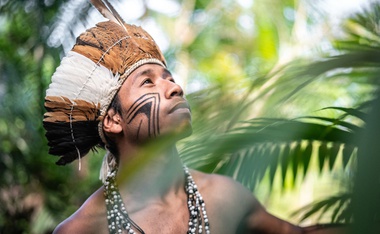

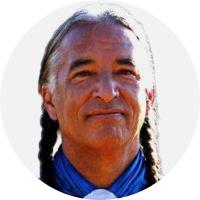




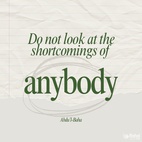
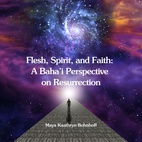

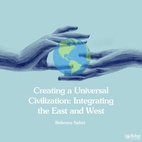

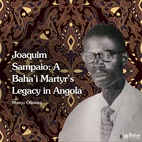
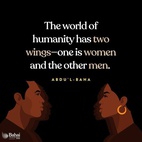


Comments
Sign in or create an account
Continue with Googleor